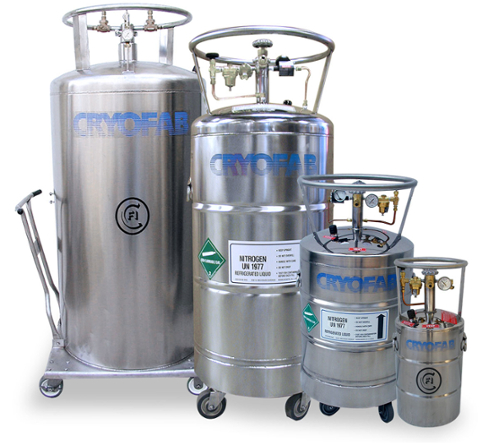Cryogenic Liquid Storage
Containers
Cryogenic liquids can be transported, stored, and handled in a variety of containers depending on quantity and desired use. All three types of containers are present at Southern Utah University.
Dewars
Dewars are non-pressurized, double walled containers used to contain cryogenic liquids. The area between the walls is under high vacuum for maximum thermal insulation. They have a loose fitting insulated cap that enables gases to escape while preventing moisture buildup at the neck. In many cases they are used in "satellite" cryogenic liquid containers within a lab.

Dewar flasks are smaller, double-walled cryogenic storage containers that usually only maintain the liquid for a few hours. They usually have a metal outer wall and a glass inner wall, with the void space under high vacuum. Special care should be taken when handling as these flasks can implode.

Cryogenic Liquid Cylinders
Cryogenic liquid cylinders, sometimes also referred to as Dewars, are insulated, vacuum jacketed, pressurized vessels. They come equipped with safety relief valves and rupture disks to alleviate pressure buildups. These cylinders come in a variety of sizes ranging from 80-450 liters. They can be equipped to provide gas through an internal vaporizer or provide liquid under their own internal vapor pressure. These cylinders are usually filled by the users at filling stations throughout the campus. All users must wear proper PPE when filling and discharging. Cryogenic cylinders routinely relieve their internal pressure and you may observe a sudden hissing sound and the appearance of a fog. This is completely normal. When using cryogenic cylinders, users should ensure that all valves and pressure relief devices are in place and in good condition. If pressure relief devices fail, catastrophic failure may result.

Cryogenic Storage Tanks
A few buildings on campus have cryogenic storage tanks. These are filled by vendors on a set schedule and are used to fill the end user cryogenic cylinders and dewars.

